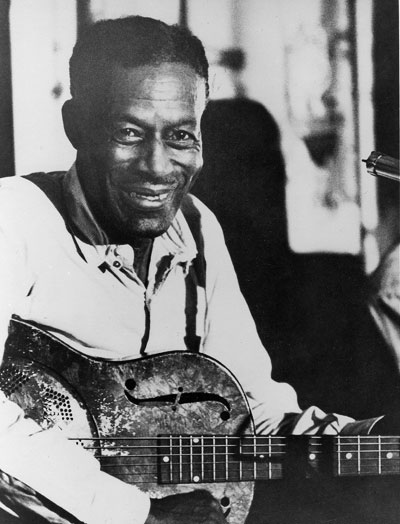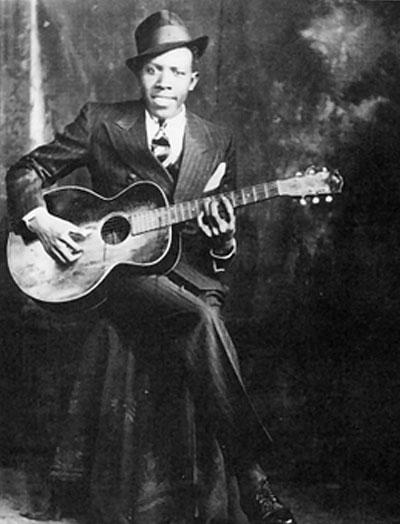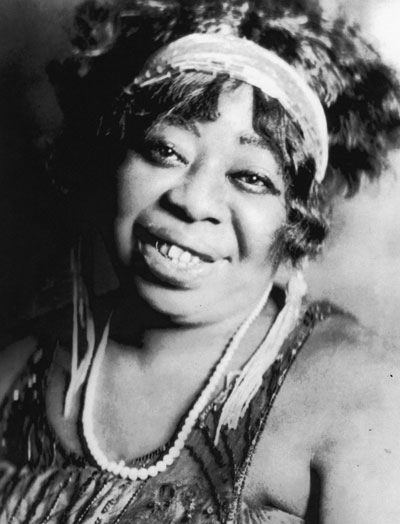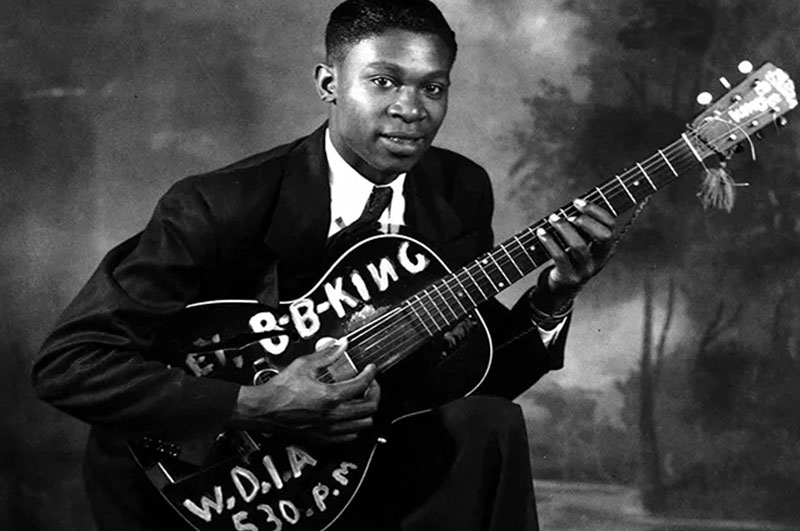DAY 20: ENTERTAINMENT PT1 – BIRTH OF THE BLUES – FROM SPIRITUAL HYMNS TO THE CHICAGO JUKE JOINTS
#LetTheTruthBeTold, if there was somebody who had something to sing about, it was Black folks in America. Whether a desperate plea for God to bring them home to gold paved streets or the celebration of their newfound freedom, there always seemed to be a song that made the hostile world they were facing seem like a better place. Black churches sprang up on or near every plantation. And the Christian hymns bellowed by African Churchgoers rang out through the thick summer air like a soothing suave on a fresh scar.
I believe it’s true, you can take the African out of Africa, but you can’t take Africa out of the African. And from my vantage point, I would hope that people would stop trying to. In those rare moments when Blacks found some time, not under the crack of the whip, their creative ancestral musicality shined through with every drum beat and left foot stomp. It wasn’t long before the same church-house rhythms and beats were becoming rhythms and blues.
Songs transitioned from eloquent prayers and supplication to singing about the problems they were facing–can I get an amen? Church-house by day, Juke joint by night. It only takes a person to spend an afternoon at Chicago’s Blues Festival, dancing on the grass at the stage front while listening to Sacred Steel to see, hear, and most importantly, feel the connection between early sanctified church music and the blues. Music born out of hardship, struggle, and unsurmountable achievement touches something down on the inside. Now, baby, that’s something I can feel–and so did the rest of the world.
The Blues, my friend, was here to stay. Performer after performer bellowed out lyrics laced with adult themes and troubling circumstances that didn’t have an end or a happy solution. But then, “t’aint dat da blues.”
#LetTheTruthBeTold, from the Mississippi Delta of Louisiana and Texas, up to Memphis, St.Louis, and Chicago, Guitarist and Harp (Harmonica) players Such as Lead Belly, Robert Johnson, Son House, and Blind Lemon Jefferson set the nation on fire and down the path toward rock and roll. Indeed, these legends, along with singers Ma Rainey and Bessie Smith, broke down the doors paving the way for Muddy Waters, Howlin Wolfe, and of course, the incomparable Chuck Berry. So get yourself in the back seat and buckle your seat belt. Go ahead, roll that window down and turn that radio up. Let the stretched string rhythms and the heart-wrenching lyrics set your smile ablaze while bringing peace to your soul. Enjoy the collection.
We have chosen to celebrate a select few Blues pioneers from the 19th and 20th century for their determination to change the perception of Black peoples contributions and thus change the landscape and future of our country. Today we honor their genius. We must not let their efforts be forgotten or let others bask in the credit of their achievements. Today we change the narrative. #LET THE TRUTH BE TOLD.
“We Gots Da Blues, and rightfully so”
EARLY BLUES PIONEERS LEADBELLY AND BLIND LEMON JEFFERSON
Lead Belly was a folk-blues singer, songwriter and guitarist whose ability to perform a vast repertoire of songs and notoriously violent life made him a legend.
Famed musician Lead Belly was born in Louisiana in the late 1880s. Lead Belly was imprisoned in Texas for murder in 1918. According to tradition, he won his early release in 1925 by singing a song for the governor of Texas. Lead Belly was imprisoned again, for attempted murder, in 1930. There, he was “discovered” by folklorists John Lomax and Alan Lomax, who were collecting songs for the Library of Congress. Subsequently, he published 48 songs.
Early Years
Huddie Ledbetter, better known as “Lead Belly,” was born in the late 1880s (the date is uncertain) in a country setting in northwest Louisiana. He attended school in Texas until around age 13, playing in a school band, and then worked the land with his father.
He began learning how to play musical instruments as a youth and eventually focused on the guitar, performing as a teenager at local dances. At age 16, he headed out across the Deep South, settling in Shreveport, Louisiana, for two years, where he supported himself as a musician. Around 1912, now living in Dallas with his new wife, Ledbetter met Blind Lemon Jefferson, an accomplished street musician, and the pair began playing together. It was at this point that Ledbetter concentrated on what would become his signature instrument: the 12-string guitar.
Blind Lemon Jefferson was born in Couchman, Texas, sometime around the 1890s although the exact date is not known and several are claimed. He was the youngest of seven children and the only one of them born blind. The details of his birth and young life are not well known, nor are the reason that he first began to play guitar and sing, but his influence on the development of blues is well known. He gained the respect of his peers with what were termed inimitable skills, and left traces of his musical characteristics in most of the blues that came after him.
Even though he started out playing on street corners near his hometown, by 1917 Lemon was living in Dallas and was already well known and admired by his peers. He began traveling by train to surrounding areas and journeyed extensively, where he met other blues greats such as: Huddie Ledbetter (Leadbelly), Robert Wilkins and Son House. It was widely thought that he played in every Southern state at one time or another and several artists recount stories of playing with him multiple times. Lemon was a firm businessman, playing only for money, with a reputation for stopping as soon as it did. Read More.
LISTEN TO A BLIND LEMON JEFFERSON RECORDING
“Best of the Delta Blues”
THE LEGENDS OF SON HOUSE AND ROBERT JOHNSON

Son House 
Robert Johnson
Eddie James “Son” House (1902-1988) plumbs the emotional depth of the blues perhaps more than any other Delta blues artist. A preacher at times, a barrelhousing bluesman at others, House was fiercely torn between the sacred teachings of the church and the secular lure of the blues life. House, who lived in the Robinsonville-Lake Cormorant area in the 1930s and early ’40s, was a major influence on both Robert Johnson and Muddy Waters.
Son House is regarded as one of the preeminent blues artists, but during his early career in the Delta, his renown was largely confined to local jukehouse audiences. He later attained international prominence during the 1960s “blues revival” through passionate, trance-like performances that highlighted his aggressive guitar style. He would occasionally rise from his chair to sing spirited a cappella gospel songs.
House was born near Lyon in Coahoma County on March 21, 1902, or by some accounts years earlier. Through his association with Delta blues legend Charley Patton, House first recorded for the Paramount label in 1930, though sales were minimal in the Depression era. Like other Robinsonville-area blues artists, including Robert Johnson, Howlin’ Wolf, and Willie Brown, House performed mostly at weekend suppers and dances held at sharecroppers’ houses. Tunica County locals have recalled House living and working on the Harbert, Tate, and Cox plantations, though he preferred to sing or preach. When the spirit called, he would preach at various churches, only to resume his nightlife as a bluesman.
LISTEN TO A SON HOUSE RECORDING
Robert Johnson was the eleventh child of Julia Major Dodds. Born out of wedlock, Johnson did not take the Dodds name. He grew up with his mother in Hazlehurst, Mississippi but soon moved up to live with his father, Charles Dodds, in Memphis. Charles Dodds changed his last name to Spencer and so Robert was known in his younger years as Robert Spencer. Around 1918, Johnson moved to an area around Robinsonville and Tunica, Mississippi to rejoin his mother who had remarried. Not much is known about Johnson’s childhood other than he was always interested in music. People in the Delta who knew Johnson claimed played the diddley bow when he was younger. A diddley bow is wire attached to nails sticking out of houses. A person could then hit the wire with a stick and use an empty bottle that slides along the wire to change the pitch.
In his teenage years Johnson met Son House and Willie Brown, two Delta blues musicians who would become his musical mentors. Young Johnson followed them and other musicians as they played in small Delta towns. Often he performed on street corners or in front of barbershops playing blues and on occasion jazz and even country music for tips on his acoustic guitar and harmonica. It was here that Johnson honed his showmanship and his remarkable combination of singing, guitar-playing and songwriting talents.
WATCH VIDEO DOCUMENTARY
“Woman Blues Pioneers”
MA RAINEY AND BESSIE SMITH

Ma Rainey 
Bessie Smith
Jazz and blues vocalist Bessie Smith’s powerful, soulful voice won her countless fans and earned her the title “Empress of the Blues.”
Bessie Smith began to sing at a young age and in 1923 signed a contract with Columbia Records. Soon she was among the highest-paid Black performers of her time with hits like “Downhearted Blues.” By the end of the 1920s, however, her popularity had lessened, though she continued to perform and made new recordings at the start of the Swing Era. Her comeback and life were cut short when she died on September 26, 1937, from injuries sustained in an automobile accident outside of Clarksdale, Mississippi.
WATCH BESSIE SMITH VIDEO | SHORT DOCUMENTARY VIDEO
Her Early Life
Smith was born on April 15, 1894, in Chattanooga, Tennessee. She was one of seven children. Her father, a Baptist minister, died soon after her birth, leaving her mother to raise her and her siblings. Around 1906 her mother and two of her brothers died and Smith and her remaining siblings were raised by their aunt. It was around this time that Smith began to perform as a street singer, accompanied on the guitar by one of her younger brothers. In 1912 Smith began performing as a dancer in the Moses Stokes minstrel show, and soon thereafter in the Rabbit Foot Minstrels, of which blues vocalist Ma Rainey was a member. Rainey took Smith under her wing, and over the next decade, Smith continued to perform at various theaters and on the vaudeville circuit.
Singer Ma Rainey was the first popular stage entertainer to incorporate authentic blues into her song repertoire and became known as the “Mother of the Blues.”
Ma Rainey was the first popular stage entertainer to incorporate authentic blues into her song repertoire. She performed during the first three decades of the 20th century and enjoyed mass popularity during the blues craze of the 1920s. Rainey’s music has served as inspiration for such poets as Langston Hughes. Described by African American poet Sterling Brown in Black Culture and Black Consciousness as “a person of the folk,” Rainey recorded in various musical settings and exhibited the influence of genuine rural blues. She is widely recognized as the first great female blues vocalist.
Early Career
Rainey was born Gertrude Pridgett on April 26, 1886, in Columbus, Georgia, to minstrel troupers Thomas Pridgett, Sr. and Ella Allen-Pridgett. Rainey worked at the Springer Opera House in 1900, performing as a singer and dancer in the local talent show, “A Bunch of Blackberries.” On February 2, 1904, Pridgett married comedy songster William “Pa” Rainey. Billed as “Ma” and “Pa” Rainey the couple toured Southern tent shows and cabarets. Though she did not hear blues in Columbus, Rainey’s extensive travels had, by 1905, brought her into contact with authentic country blues, which she worked into her song repertoire. “Her ability to capture the mood and essence of Black rural southern life of the 1920s,” noted Daphane Harrison in Black Pearls: Blues Queens “quickly endeared her to throngs of followers throughout the South.”
LISTEN TO MA RAINEY BLUES | SHORT DOCUMENTARY VIDEO
Rainey as the first great blues stage singer: “The good-humored, rollicking Rainey loved life, loved love, and most of all loved her people. Her voice bursts forth with a hearty declaration of courage and determination — a reaffirmation of Black life.”
DAPHNE HARRISON
“Other Notable Early Blues Legends”
20 SUCCESSFUL BLACK OWNED BUSINESSES
Over the decades many artists have helped to define the musical genre known as the blues. Each contributed to the music, through their instrumental skills—usually on the guitar—or vocal talents. Their early recordings and performances influenced the cultural impact of the blues and the generations of artists who followed. Whether you’re a fan of the blues or a newcomer to the music and want to know more, here are 10 blues artists you should know:
“Blues History Pt-1”
WATCH BLUES HISTORY DOCUMENTARY
“Blues History Pt-1i”
WATCH BLUES HISTORY DOCUMENTARY
“King of the Blues”
LADIES AND GENTLEMEN MR. B.B. KING

Legendary blues singer B.B. King was born Riley B. King on September 16, 1925 in Itta Bena, Mississippi. King spent his childhood in the Mississippi Delta, but in 1946 left to pursue a music career in Memphis, Tennessee. While in Memphis, King was employed as a singer and disc jockey at radio station WDIA where he was given the radio name “Beale Street Blues Boy” which he shortened to B.B. In 1949 while at WDIA he recorded many of his early singles for RPM records in Los Angeles, California.
King began to have significant success as a blues artist in the 1950s with a string of recordings such as “Please Love Me,” “Whole Lotta Love,” “Every Day I Have the Blues,” and “Ten Long Years.” His hits brought him to the attention of Paramount Records which signed the blues performer in 1962. In November 1964 he recorded Live at the Regal at the Regal Theater in Chicago, Illinois, at that point one of the most successful blues albums ever produced.
Despite his exposure on a leading record label and his Live album, King’s first national hit came only in 1969 when he released “The Thrill Is Gone” a song that rose on the blues, rhythm and blues, and pop charts. That same year King became the Rolling Stones’ opening act, a development that exposed him to a much wider audience.
WATCH BLUES DOCUMENTARY ON B.B. KING
There are countless other blues contributors to list. It is impossible to include them all. But we salute them all and all that they gave to make our country what it is today. Today We celebrate them.
The blues set the foundation for the music industry as we know it today. The deep emotional scars of America, were soothed at least for a moment while the lyrics and screaming stretched strings quieted the anguish in our souls.
PHILIP GREENE
Content provided courtesy of History.com, Britannica.com and Wikipedia.com, Biographies.com, Blackpast.com, msbluestrail.org, notablebiographies.com, business.tutsplus.com, tylerperry.com, liveabout.com, and youtube.com. All Rights Reserved.


